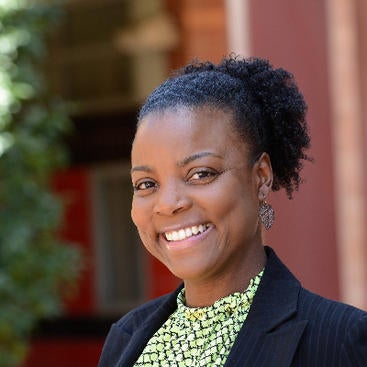
Most students are familiar with their university’s chancellor or president. But what about the people who make up their school’s board of trustees?
Boards of trustees are the governing bodies behind many universities and university systems. Although they often operate in relative anonymity, the decisions they make can have far-reaching impacts on students, faculty members, and staffers, said Raquel M. Rall, an assistant professor in the Graduate School of Education at the University of California, Riverside.
Rall studies leadership and governance of higher education, and how those structures play a role in promoting or hindering equity on college campuses. She’s one of three co-founders and co-directors of the Critical Higher Education Governance Collaborative, which aims to improve higher education governance through research, education, and consultation, among other efforts.
Rall said boards of trustees wield an enormous amount of power on campuses but are a severely understudied group.
They influence university happenings in a variety of substantial ways, from selecting new chancellors and presidents to determining whether to increase tuition. They can also be instrumental in guiding how universities address issues related to equity.
“To put it plainly, boards have their hands in every pot,” Rall said.
But as the demographics of student bodies have shifted, most boards — which remain composed primarily of older, wealthy, white men — haven’t in turn evolved to stay representative of the populations they’re making decisions for, she noted.
In an article published this week in the Journal of Education Human Resources, Rall and two co-authors, Felecia Commodore of Old Dominion University and Demetri L. Morgan of Loyola University Chicago, discuss how boards might work to resolve this issue by embracing what they call “culturally sustaining governance.”
“We have a few individuals who are governing on behalf of the many, but those individuals don’t look like the people they’re governing on behalf of, and they certainly don’t think like them,” Rall said.
“We need more diverse perspectives in the decision-making room if we want to continue to advance higher education for everyone — better representation for the people who aren’t in the room, not just in composition but in thought and idea.”
To adopt culturally sustaining governance is to acknowledge that for change to occur, it must first be modeled at the top. In simple terms, boards’ emphasis on equity is key to more equitable outcomes for all students, faculty members, and staffers.
“Culturally sustaining governance is a mindset, tool, and approach to empower trustees and their affiliates to prioritize equity through resources, knowledge, skills, behaviors, and attitudes that inform decision-making,” Rall and her co-authors wrote.
“The fundamental core of culturally sustaining governance is the ability to link principles of leadership and governance with deep awareness and understanding of, and appreciation for, different types of culture at different levels.”
Governing in a culturally sustaining manner especially means amplifying the voices and experiences of “othered” populations that have been minoritized on college campuses, the researchers added.
They used the University of California, which is situated in one of the most racially diverse states in the country, as an example of a university system that has modeled elements of culturally sustaining governance.
In particular, the researchers cited the UC Board of Regents’ approval of a systemwide Diversity Statement, first adopted in 2007, as a potential catalyst for equity.
They highlighted the board’s creation of a working group in response to the rise of anti-Semitism on UC campuses, but noted that certain board actions have actually hindered equity work, such as the decision in January 2019 to eliminate a student adviser position.
The researchers also said UC’s failure to raise enrollment rates among African American students — who remain underrepresented across the system — is another instance where board leadership could do more to pursue equitable outcomes.
Rall noted that in her experience, studying governing boards can be difficult because members are typically high-ranking in their fields and difficult to access.
Likewise, change can be hard-won because members reap multiple benefits from their participation on governing boards and thus aren’t usually inclined to give up their power willingly, she added.
“These individuals are not only privy to information about the institution or system they’re serving, but they’re also in a room with other movers and shakers who enable their power to expand through side deals they’re able to broker for the different entities they’re involved in,” Rall said of board members.
Still, she emphasized that working toward greater diversity on boards is critical for larger structural change on campuses and across university systems.
“The wrong conclusion to draw from this research is that we need more diversity just to check off a box — that we just need more black people or Latino people on boards because that will make it better,” Rall said. “We really need to consider differences in thought when we think about how we govern on behalf of everyone.
“Boards are an important piece of the puzzle, but they’re not the only piece,” she added. “If we only focus on boards during equity conversations, we’re not going to solve all our problems. But if we don’t focus on boards, we’re not going to solve any of our problems.”
Header photo by Drew Beamer via Unsplash




